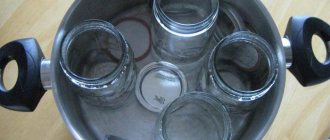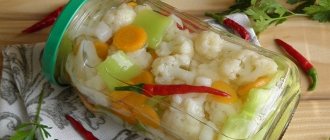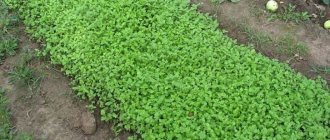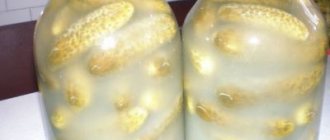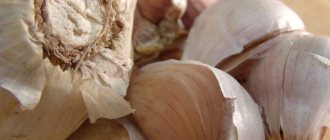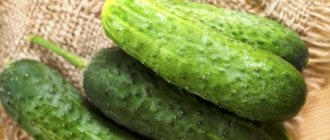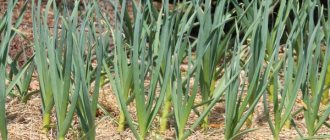One of the most common questions about winter preservation is related to why cucumbers in jars become cloudy after sealing.
Dear readers!
For you, we have created communities on social networks in which useful articles and interesting ideas are published several times a day! Subscribe and receive useful content in a convenient format! The technology of canning is familiar to every housewife since childhood. All products are our own. However, the brine becomes cloudy.
In this article we will try to understand the reasons for this phenomenon.
The most common causes of cloudiness of cucumbers in jars after seaming
The fact that the brine becomes cloudy can be caused by a variety of factors. Let's try to look at the most common ones among them.
ON A NOTE.
Coloring the brine in a jar with vegetables whitish does not always pose a health hazard.
Cucumbers were prepared incorrectly for pickling
The reason why cucumbers in jars turn cloudy after seaming is most often the fault of the summer resident himself.
Vegetables for canning are prepared strictly using technology that prevents foreign substances from entering the jar.
Also, the liquid may become cloudy due to the fact that salad cucumbers were chosen for rolling.
At this point we can mention the choice of old and soft greens for preservation.
The seal in the jars of cucumbers is broken
To prevent the preservation from being lost, the container must be sealed hermetically. This is necessary so that the outside air does not interact with the brine (marinade).
Otherwise, rotting will begin. This, in turn, will provoke cloudiness, which will cause the can to swell and then completely explode.
You can determine the tightness of the seal by turning the jar upside down.
The seal is broken due to poor-quality lids, cracks and chips on the neck of the jar and a faulty seaming key.
If the cause of the cloudiness is precisely a violation of the tightness, then such preservation should be thrown out.
Cucumbers were poorly washed before seaming
Insufficiently washed cucumbers are a fairly common cause of problems with brine.
Bacteria may remain on the cucumbers and begin to multiply in the jar. This will cause gases to accumulate inside the sealed container.
As a result, the brine will first become cloudy, and then the jar will “explode.”
Poor sterilization of seaming containers
The pickling jar must be completely sterile. Sterilization is usually carried out using steam from boiling water. Although, of course, options are possible.
If the containers were sterilized extremely poorly, then pathogenic microflora will continue to remain on the inner surface, which will release their metabolic products into the brine.
As a result, the seam will be damaged and will have to be thrown away.
Also here we can mention the insufficiently thorough rinsing of cans from dishwashing detergent, soda, etc. This also causes the cucumber pickle to change color.
Presence of chemicals
If you close store-bought cucumbers for the winter, be prepared for the fact that they may become cloudy.
This is due to the fact that they may contain many chemicals (stimulants, growth regulators, etc.).
The fact is that industrially grown cucumbers are mainly intended for fresh consumption and not for preservation.
Improper storage of cans
An error such as improper storage also leads to clouding. The workpieces must be kept in a room with a temperature no higher than 7 degrees. Then there will be no problems with them.
But when storing cans in conditions close to room temperature, excesses are possible. It is recommended to keep the jars at +20 +25 degrees only so that the containers with greens cool down.
Presence of lactic acid
Lactic acid is released when cucumbers are preserved. But, if there is too much of it, the fermentation process will begin, which will lead to cloudiness of the brine in the container with pickles.
Housewives use vinegar and citric acid specifically to suppress lactic acid. But if these ingredients are not enough, the brine will become cloudy.
By the way, this is why it is important to follow the recipe and proportions of ingredients when marinating.
Useful tips for pickling cucumbers
A few practical tips will help you make your preparations more tasty and keep them longer:
- To ensure that the greens crisp and the brine remains transparent, after filling the jar with raw materials, place a clove of garlic and a horseradish leaf on the very top. These products have antiseptic properties and therefore prevent fermentation.
- Use lids made of stainless steel.
- To preserve and improve the taste, always place a few circles of horseradish root or hot pepper at the bottom of the jar.
- Add sour fruits to the jars - they will increase the effect of the preservative. Greenish cherry plum, a slice of sour apple or red currant are suitable.
Find out more about the best recipes for pickling cucumbers in a pan for the winter.
There are several techniques to correct the situation with cloudiness of the brine in pickled cucumbers. However, it is better to carefully follow the process technology and nip such unpleasant surprises in the bud.
Is it possible to eat cucumbers from a cloudy jar?
It's a shame to see the fruits of your labors go down the drain. Naturally, the question arises: is it possible to somehow use such cucumbers? Is there or can it be used for preparing some dishes?
In general, we do not recommend eating or using cloudy cucumbers for preparing other dishes. But it is worth recognizing that this is not always a sign of their unsuitability.
If the brine has become cloudy, but the cucumbers are visible, there is no swelling of the lid, and sediment appears only after 3-4 days, then the cucumbers can be eaten.
IMPORTANT!
But only after heat treatment. For example, boiling water when added to soup.
In this case, the cloudy liquid is drained, and the greens themselves are placed in a clean plate and placed in the refrigerator.
What to do with a cloudy jar of cucumbers
Now let's figure out what to do with a cloudy jar.
What to do if pickles become cloudy
If the pickles have darkened, then do not rush to do anything. First, place the jars in the refrigerator for a week.
If the brine gradually begins to lighten and sediment appears, and the lid remains intact, then nothing needs to be done.
Cloudy jar of pickled cucumbers
If dregs appear in a jar containing pickled cucumbers, then they should be thrown away without regret.
This is because the causative agent of botulism can survive in jars.
When can you eat cucumbers from cloudy brine?
Before you take this brave step, remember that there is always the possibility of getting botulism bacillus into the jar . At best, you can get away with an upset stomach.
Important! Botulism is a serious, fatal disease. Do not neglect the rules for storing the product. It is better to throw away the missing vegetables and make a new preparation.
In some cases, eating cucumbers from cloudy brine is possible:
- if the solution became cloudy within a few days after preparation and the methods we indicated later helped;
- if the liquid changed color a little later and the lid did not swell;
If both signs of fermentation are present (a swollen lid and poor brine) , then under no circumstances should you eat the cucumbers or try to “save” them.
Is it possible to remake cloudy cucumbers?
If there are no signs of swelling on the lid (it remains slightly concave inward), there is no mold, then the seaming can be redone.
Please note that only pickled cucumbers can be remade. Marinated ones are not remade.
The algorithm is like this:
- open the lid;
- drain the brine;
- take out the greens;
- pour boiling water;
- put the greens back;
- pour boiling water;
- after 15 minutes, pour the water into the pan;
- add lemon (vinegar), sugar, salt according to the recipe;
- boil;
- pour back into the jar;
- roll up using good new lids.
IMPORTANT!
Only pickled cucumbers can be remade!
Advice from experienced housewives
Annual preparations in large volumes allow you to develop your own patterns and secrets of preserving vegetables until spring.
Experienced housewives give these recommendations:
- To minimize the risk of the jar swelling, add some mustard seeds. They will also help make the vegetables firmer and crispier. When the jars of pickled cucumbers and mustard seeds have cooled, they are put away in the cupboard until winter.
- If you want to protect your preserves from mold, place a couple of thin slices of horseradish under the lid. Horseradish root will act as an additional preservative; with it, the marinade will not darken or become cloudy.
- Alcohol stops fermentation processes and kills mold fungi better than any other natural substance. It is enough to add 1-2% vodka (40% alcohol, odorless moonshine) of the amount of water to the marinade or brine to avoid vinegar, which affects the taste of cucumbers.
- Do you want to make cucumbers more juicy and crunchy? Then find a small piece of oak bark, boil it first and add it to the jar. Crushed oak bark is sold in paper packages in pharmacies. Keep in mind that the bark makes the cucumbers a little darker than usual.
- If you need the cucumbers to pickle faster, cut off the tails or prick them with a fork.
- If you use screw caps, there is no need to turn the jars over. Turn over the jars, closed with machine lids, and cover them with a blanket.
What to do to prevent cucumbers from turning cloudy
Having understood the causes of the phenomenon, let's move on to recommendations. So, how to avoid a situation where the brine or marinade turns whitish.
Prepare cucumbers and jars thoroughly
Insufficiently thorough washing is one of the main reasons that vegetables become cloudy in a jar.
Do not use store-bought greenhouse greens.
Store-bought greens can retain residues of chemicals and mineral supplements in their tissues.
Their interaction with boiling water and preservatives can cause clouding of the brine.
Follow the recipe
The marinade must be boiled twice, and the vinegar must be poured in immediately before sealing the jar.
Changing the recipe (especially an insufficient amount of vinegar or lemon juice) can cause the color of the liquid in the jar to change to whitish.
Use only table salt
Iodized and sea salt can leave sediment, but table salt works well in preservation.
Use a valid key
With a faulty key, you will not be able to seal the lid. As a result, air will get inside and the can will eventually “explode.”
How to prevent brine cloudiness
There are several ways to prevent cucumber pickle from becoming cloudy:
- soaking greens for several hours before using;
- thorough cleaning of all raw materials used from contaminants, including rinsing whole spices with boiling water;
- washing cans with soda and then sterilizing;
- mandatory use of a preservative in the form of vinegar or citric acid; it is better to avoid aspirin or use it extremely rarely.
Common mistakes
- Using the “wrong” vegetables. For preservation, it is best to use dense varieties with greens covered with many pimples. The length of the greens is no more than 15 cm.
- Using sea or iodized salt. These types of salt produce a precipitate, which leads to cloudiness of the liquid in the jars.
- The marinade is boiled only once. This must be done twice.
- Using low-quality cans. Jars with chips and cracks are not suitable for preservation.
- Poor preparation of vegetables and jars. Before seaming, everything must be thoroughly washed and the jars sterilized.
- Lids are not sterilized. Sometimes they forget about the lids, although they also need to be “boiled in boiling water” or doused with steam.
Causes of mold on pickled cucumbers
The main reason for damage to homemade products is violation of preservation technology or failure to maintain cleanliness . All products used must be thoroughly washed, jars and lids sterilized. Any dirt that gets inside can trigger the process of putrefactive fermentation and mold formation.
Violation of the recipe and the use of inappropriate ingredients may also be the cause . Salad cucumbers are not intended for long-term storage and are not suitable for canning; you need to choose special varieties for pickling. Carefully ensure that the vegetables are fresh and without signs of rot.
Attention! It is not recommended to use iodized salt instead of table salt.
The cause of spoilage of the products may be a lack of salt, as well as non-compliance with storage rules .
Answers to frequently asked questions
Can you eat cucumbers from a cloudy jar?
Not recommended. However, in some cases it is allowed to use greens in the preparation of soups and other dishes that require heat treatment.
Why does the jar become cloudy?
There are a lot of reasons. For the most part, this is a violation of cooking recipes, improper preparation for preservation and poor-quality seaming.
What to do with a cloudy jar?
If the lid is swollen, throw it away. If everything is in order with the lid, there is no mold, then put the cucumbers in the cold and look. If a precipitate forms and the liquid turns lighter, then everything is fine.
How to revive cloudy preserves
Of course, it’s easier to make new pickled cucumbers than to try to fix the ones that didn’t work out. Analyze your mistakes and avoid making them in the future.
It is important how early you detected the first signs of fermentation of the preserve. If this happened shortly after screwing and the caps have not yet bulged, then you can try to redo it. Pour out the solution, rinse the cucumbers and fill them with fresh ones - prepared using all technologies. In most cases, this method helps. You can do this without removing the vegetables from the jar. Just pour boiling water over them and wait a few minutes, and after that pour in the prepared solution. Don't forget to add vinegar and keep the jars upside down for 24 hours.
Important: Be prepared that the taste of “converted” cucumbers will differ from the usual preserved ones. Therefore, you can use rescued pickled products to prepare salads, soups, etc.
And we repeat again that the described manipulations are performed only in the absence of a swollen lid. Otherwise, you risk harming the health of yourself and your loved ones.
See also
Simple and step-by-step recipes for preparing salted watermelons for the winter in jars
Read


